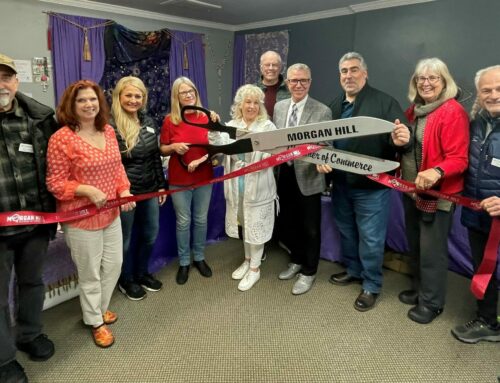Published in the Aug. 5-18, 2015 issue of Morgan Hill Life
The Monterey Road Complete Streets Pilot program has stirred up a hornets nest of emotions among Morgan Hill citizens. Many residents feel passionately either in favor or against the idea of transforming the traffic flow through downtown by closing the sidewalk-side lanes on both sides of the median.
We at Morgan Hill Life have had discussions with and received emails from our readers and downtown businesses that show us the sharply divided opinions about the potential decision to close the two lanes permanently. Those opposing lane closing make the argument that Complete Streets adds extra time to their daily commute. Those favoring continuing the program tell us they like how it has made the downtown a more relaxed and quieter place to dine, shop and do business.
The downtown is the heart of our community, and we as a community need to decide whether or not we want to make it a more “walkable, bike-friendly, urban, family-oriented and transit-oriented neighborhood in Morgan Hill” for residents — or keep it as a four-lane thoroughfare for vehicles to travel from one side of town to the other. The question of our downtown’s future as a tourism destination and community hub is so important to the economy and quality of life of our community that we encourage all residents who feel strongly on both sides of the debate to attend the Wednesday Aug. 5 Morgan Hill City Council meeting starting at 7 p.m. and share their thoughts with our city’s elected leaders.
At that meeting, the council members will hear a report providing data gathered by consulting firm Alta Design + Planning during the five-month period of the pilot, which started Feb. 18. (The original intention was for the pilot to go until mid-August, but this was cut short due to intensive undergrounding work taking place downtown that would have skewed the results of the data.)
Narrowing the configuration of Monterey Road between Dunne and Main avenues has changed the look and feel of our downtown. Traffic has slowed down closer to the legal 25 miles per hour speed limit. We’re no longer seeing vehicles racing along downtown at up to 40 miles per hour, as was commonly the case prior to the pilot. We also saw an increase of bicyclists and families on bikes using the special buffered lanes set up for them. And we saw more pedestrian activity downtown — including families who love the popular Pop-up Park at the corner of Monterey Road and Third Streets.
Some merchants downtown said their business has gone up; others have said it has gone down for them or remains the same. The Chamber of Commerce contacted nearly every business in the downtown core and several just outside. Only six businesses opted to participate and they provided sales tax data that the chamber, the city and the downtown association compiled anonymously. The results show that four businesses saw an increase in sales, while two showed a decrease, including one that was about 45 percent less than during the same period last year. While the numbers could be seen as promising, the sample size is small and other factors such as marketing, type of business and the overall economy were not taken into account.
During the period of the pilot, we have observed some minor traffic inconveniences during peak commute hours – mostly from about 4 to 6 p.m. during the week.
One reason we believe the Complete Streets program has been contentious for our community is because of the inadequate communication or misinformation received by citizens. Several residents who corresponded with us about the Complete Streets program mistakenly believed that the program was solely designed for the convenience of bicyclists. Other residents were puzzled why the lane closure was done in the first place. The city failed to get the public to understand that Complete Streets is part of the “placemaking” plan to make downtown a social destination for residents and visitors.
As the debate continues, let’s keep in mind the goal of the Complete Streets project. It was meant to test whether reducing the number of lanes going through the downtown core would calm the traffic, increase safety and enhance the economy of downtown businesses by attracting people with a more vibrant ambiance. Other goals were to reduce the noise and air pollution and preserve mobility for those going to local businesses as well as nearby schools and other destinations. It appears to us the pilot accomplished most of those goals, with an uncertainty with the economic results.
We believe the data taken during the pilot program shows placemaking for our downtown works and we highly recommend making the lane closures permanent. If, however, the city council decides not to continue the closure, we hope the city looks at other options, such as installing lighted mid-block crosswalks and round non-reflective raised pavement markers (Bott’s dots) to continue the idea of making our downtown a more pedestrian- and bike-friendly destination.







